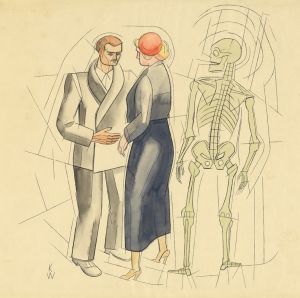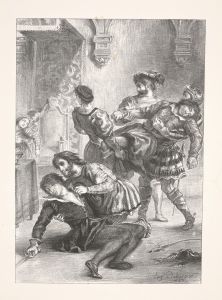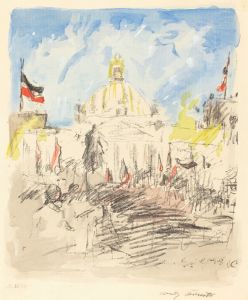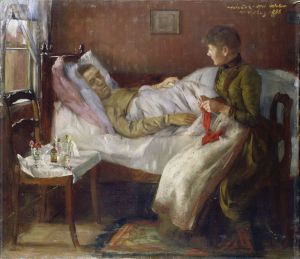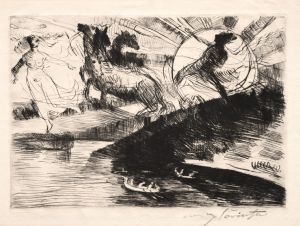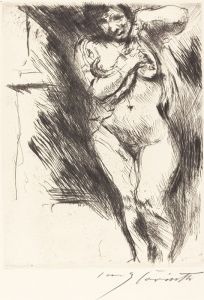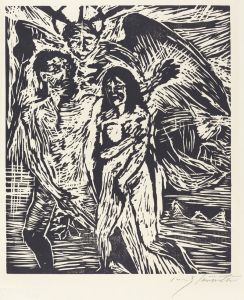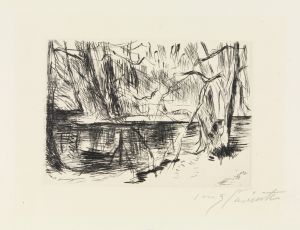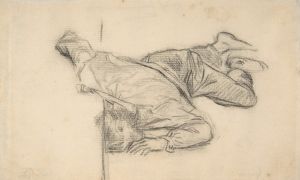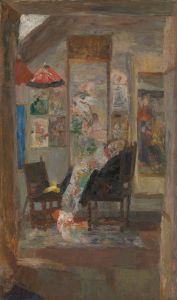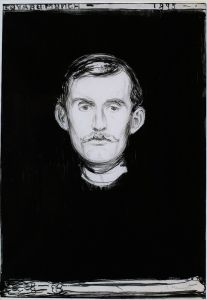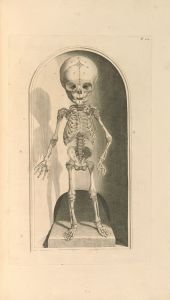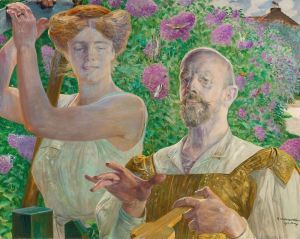
Self-portrait with Skeleton
A hand-painted replica of Lovis Corinth’s masterpiece Self-portrait with Skeleton, meticulously crafted by professional artists to capture the true essence of the original. Each piece is created with museum-quality canvas and rare mineral pigments, carefully painted by experienced artists with delicate brushstrokes and rich, layered colors to perfectly recreate the texture of the original artwork. Unlike machine-printed reproductions, this hand-painted version brings the painting to life, infused with the artist’s emotions and skill in every stroke. Whether for personal collection or home decoration, it instantly elevates the artistic atmosphere of any space.
Lovis Corinth's Self-portrait with Skeleton is a notable work by the German painter and printmaker, created in 1896. Corinth, a key figure in the transition from Impressionism to Expressionism, often explored themes of mortality, introspection, and the human condition in his art. This painting is a striking example of his engagement with these themes, as it juxtaposes the artist's self-portrait with the image of a skeleton, a traditional symbol of death.
The painting reflects Corinth's interest in the vanitas tradition, a genre of art that emphasizes the transience of life and the inevitability of death. By including the skeleton alongside his own likeness, Corinth confronts the viewer with a stark reminder of mortality. The work is both personal and universal, as it not only captures Corinth's own contemplation of life and death but also invites viewers to reflect on their own existence.
In terms of composition, Self-portrait with Skeleton is characterized by Corinth's dynamic brushwork and use of color, which were hallmarks of his style. The self-portrait shows the artist in a direct and unflinching manner, with a serious expression that underscores the gravity of the subject matter. The skeleton, positioned beside him, serves as a memento mori, a visual reminder of the inevitability of death. The contrast between the living figure and the skeletal form creates a powerful tension within the painting.
This work was created during a period when Corinth was establishing himself as a prominent artist in Germany. Born in 1858 in Tapiau, East Prussia (now Gvardeysk, Russia), Corinth studied art in Königsberg, Munich, and Paris before becoming a leading figure in the Berlin Secession, an influential group of modernist artists. His work often combined elements of realism with expressive, emotional intensity, and he was known for his portraits, landscapes, and historical scenes.
Self-portrait with Skeleton is also significant in the context of Corinth's later life and career. In 1911, he suffered a stroke that partially paralyzed his left side, forcing him to adapt his technique. Despite this setback, he continued to paint and produce some of his most celebrated works. While this painting predates his stroke, it can be seen as an early exploration of themes that would remain central to his art, including the fragility of life and the passage of time.
Today, Self-portrait with Skeleton is regarded as an important example of Corinth's early work and his ability to merge technical skill with profound emotional and philosophical depth. The painting is housed in the collection of the Städtische Galerie im Lenbachhaus in Munich, Germany, where it continues to be studied and appreciated by art historians and the public alike.





